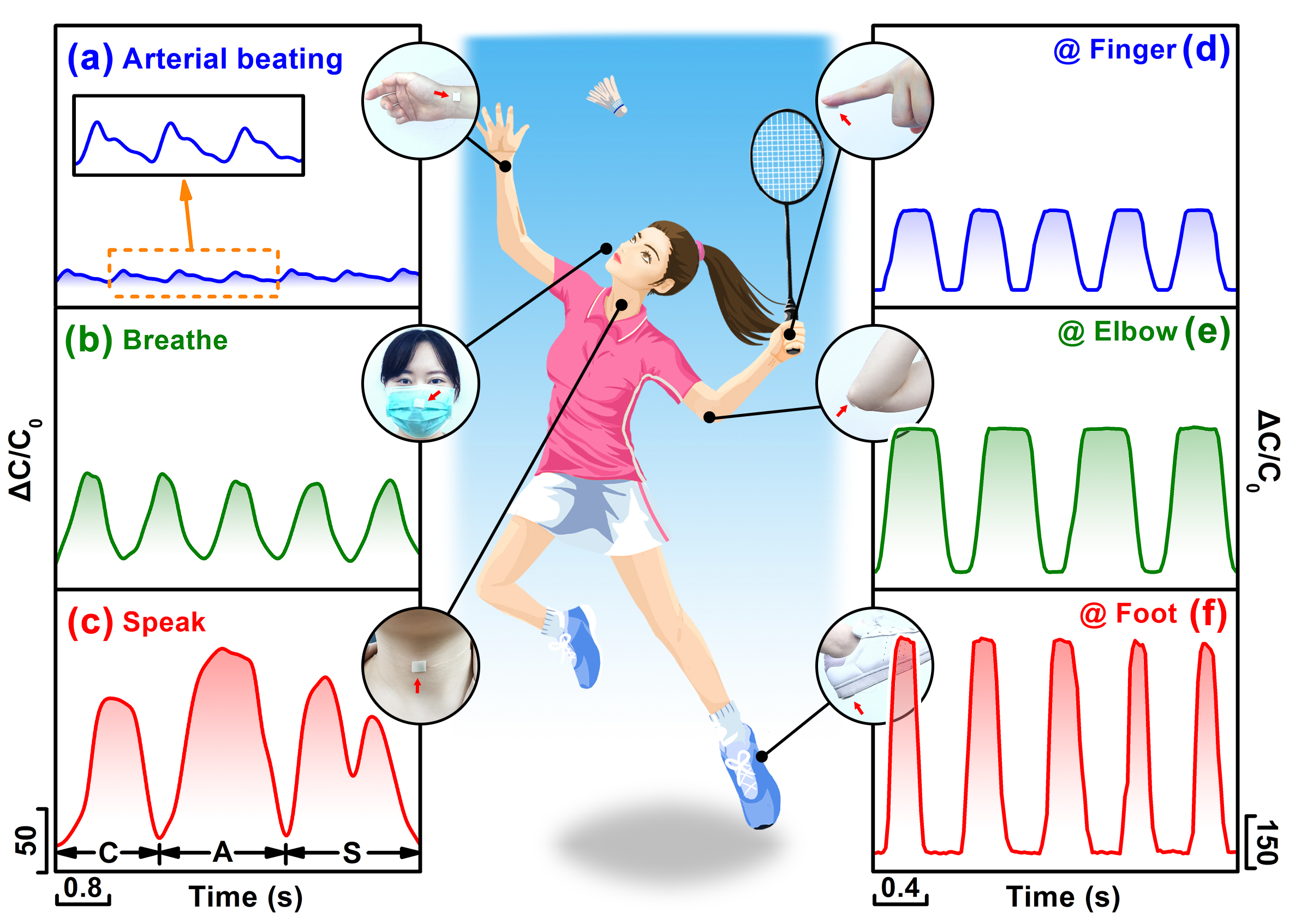
A researcher group led by Prof. ZHU Jin at the Ningbo Institute of Materials Technology and Engineering (NIMTE) of the Chinese Academy of Sciences (CAS), synthesized a novel self-healing ionic polyurethane (i-PU), thus achieving an ionic skin (I-Skin) with excellent sensing performance. The study was published in Advanced Functional Materials..
I-Skin has drawn increasing attention recently in the fields of soft robots, human-computer interaction (HCI) and wearable electronics, thanks to its excellent feasible compatibility with biological systems. However, developing an ionic skin with excellent sensitivity, durability and stability remain challenging.
The research group at NIMTE synthesized an ionic chain extender containing an ammonium cationic group, thus obtaining the target self-healing i-PU based on the polymerization. Through electrostatic interaction and chain diffusion, the synthesized i-PU can be fully self-healed at room temperature within 400 min.
Inspired by ion transmission mechanism of the Piezo 2 protein in human cytomembrane, a novel I-Skin was fabricated based on the blending of i-PU with ionic liquid (IL). Upon under pressure, part of the IL will be squeezed out due to the shrinkage of the space between the i-PU molecular chains, and move to the surfaces of dielectric layer to form electric double-layers (EDLs), which could dramatically improve the sensitivity.
The Raman results indicated that the ions aggregated on the interfaces of the dielectric layer, and the external pressure increased the concentration of the ions significantly. This proved that the developed I-Skin realizes the conversion of mechanical stimuli into electrochemical signals, which simulates the ion transmits upon Piezo 2 protein for the generation of electrochemical signals. The Raman intensity map showed the reversible process of the enrichment and restoration of ionic concentration on the dielectric layer when external pressure is applied or released, proving stable binding of ions by ionic polymer chains.
Moreover, the self-healing I-Skin showed adaptivity to a wide range of pressures (0–120 kPa), fast response time (32 ms), excellent antifatigue property (2% attenuation after 1000 cycles), and even remarkable sensitivity (52.4 kPa–1).
The developed I-Skin with excellent sensing performance showed a wide range of applications, which could be attached to different parts of human body, including wrist, nostril, throat, finger, elbow, and foot, thus generating capacitive signals of pulse, breathing, speaking, pressing by finger, elbow bending and walking. This study may shed light on the further investigation and development of self-healing and high-sensitivity bionic devices.

Diverse applications of I-Skin (Image by NIMTE)

86-10-68597521 (day)
86-10-68597289 (night)

52 Sanlihe Rd., Xicheng District,
Beijing, China (100864)

